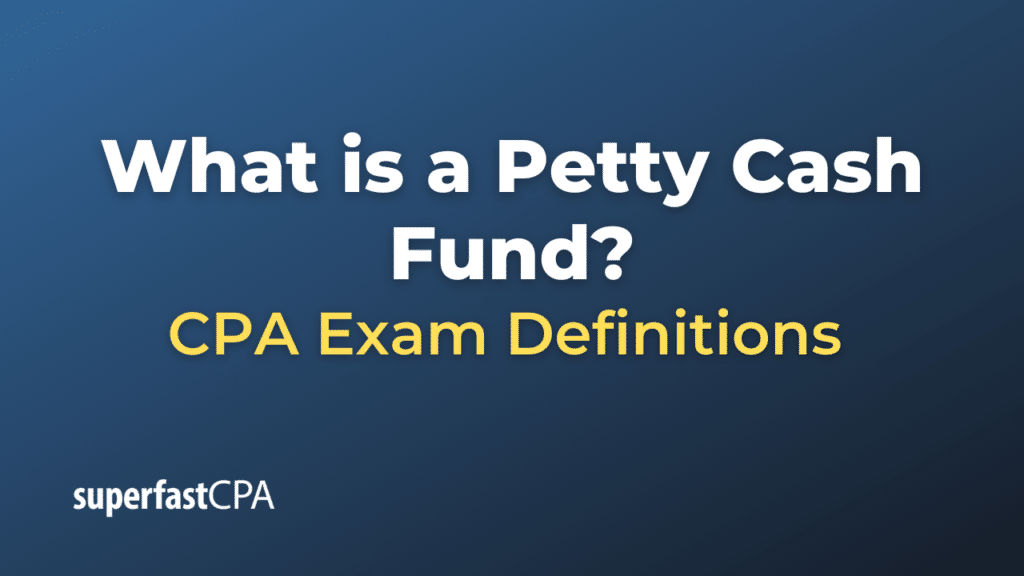Petty Cash Fund
A petty cash fund is a small amount of cash that a business keeps on hand to pay for minor, often unexpected expenses that require immediate payment in cash. Typical uses for a petty cash fund might include small office supplies, postage, minor travel expenses, or small hospitality expenses.
The fund is usually maintained on an imprest basis, meaning it has a fixed amount which is replenished when the fund becomes low. For example, if a business establishes a petty cash fund of $100, once the cash in the fund gets low or runs out, it will be replenished back to the original $100.
The replenishment is done by recording the expenses that have been paid out of the petty cash fund and then using a business check to bring the balance of the petty cash fund back to the original amount. This allows the company to maintain control over the cash and ensures that all transactions are recorded in the financial records.
To manage the petty cash fund, a company usually designates a petty cash custodian, who is responsible for disbursing the cash, collecting receipts for all transactions, and maintaining a log of all disbursements. The petty cash custodian also typically handles the process of replenishing the fund when it becomes low.
The use of a petty cash fund allows a business to efficiently handle small expenses without the need to constantly write checks or use a credit card, while still maintaining a record of all transactions. However, businesses must put in place appropriate controls to prevent theft or misuse of the petty cash fund.
Example of a Petty Cash Fund
Let’s consider an example to illustrate how a petty cash fund might be used:
- Setting Up the Fund: XYZ Company decides to create a petty cash fund to cover small expenses. The company decides $200 is a reasonable amount, so they write a check for $200, cash it, and put the money into a petty cash box. Jane, the office manager, is designated as the petty cash custodian.
- Using the Petty Cash: Over the next few weeks, various small expenses arise. A few examples might include:
- $15 for taxi fare for a visiting client.
- $25 for office supplies such as pens and sticky notes.
- $20 for refreshments for an impromptu team meeting.
- Replenishing the Fund: After several weeks, the petty cash box is down to $20. Jane adds up the receipts she has collected, which total $180. She writes a report detailing the expenses, attaches the receipts, and submits it to her manager.
- Reapproving the Fund: Jane’s manager reviews the report and receipts to confirm the expenses. Satisfied, he approves a company check for $180, which Jane cashes and puts into the petty cash box to bring the total back up to the initial $200.
This example illustrates the purpose and process of a petty cash fund. It allows the company to efficiently handle small expenses while still maintaining an accurate record and control of these transactions.













